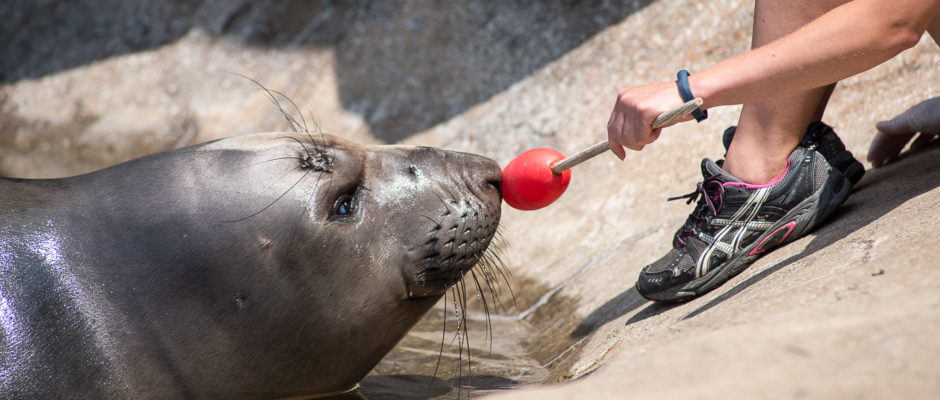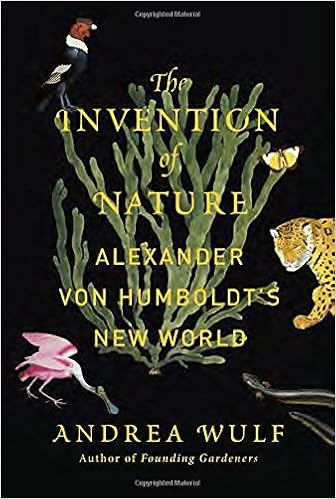Located just north of Boston, the Stone Zoo makes up one half of Zoo New England, the other half being Boston's
Franklin Park Zoo. Over the course of its chaotic history, it grew from a small collection of local species in 1905 to a major zoo (complete with elephants, sea lions, and orangutans) in the 1970s, to closing its gates in 1990, following severe budget cuts. Though it was able to reopen two years later, zoo lost most of its large animals and rapidly sank into decline.
Community support rallied around the flailing zoo, however, and Stone Zoo has gradually begun to build itself back. It will likely never again be a major zoo complete with the large collection of big mammals that it once had. Instead, it is growing into a role of a small zoo for a small town, doing well with the space and resources it has.
Prior to his death in 2000, the star of the Stone Zoo (and its last holdover from its golden years) was Major, the polar bear. Major may be gone, and the zoo no longer exhibiting polar bears, but his legacy can be found in the zoo's
Yukon Creek trail. American black bears occupy the site of the former polar bear exhibit and are visible nose-to-nose through large windows. Along the meandering, wooded trail, visitors may encounter bald eagle,
North American porcupine, Canada lynx, and arctic fox. A small paddock of caribou rounds out the section.
More cold-weather animals may be seen in the
Himalayan Highlands, where the stars are the snow leopards. The leopards inhabit a rocky, hillside enclosure, secured behind thin wire mesh. Wrapping around the back of the snow leopard exhibit is one of the zoo's finest habitats, a sprawling yard for
markhor - spiral-horned Asian mountain goats which are a preferred prey of snow leopards. The markhor may look down at visitors from the rocky heights of their exhibit, or descend to ground level to graze in a grassy meadow. Located nearby are yaks and rarely-exhibit black-necked cranes (only the second time I've ever seen these gorgeous birds).
Treasures of the Sierra Madre highlights the species of the US-Mexican borderlands, with jaguars and pumas being the stars. The former can be seen in an exhibit that resembles an abandoned mining camp, splashing in the water tanks for climbing through the derelict equipment. Among the ruined abobe buildings, widows provide peek glances at snakes, bats, Gila monsters, and tarantulas, while meshed-in enclosures house
roadrunners and coatis. Chacoan peccaries (not from the Sierra Madre, but perhaps serving as a stand-in for collared peccaries, root around in a dusty yard formerly occupied by coyotes.
The best exhibit in the zoo is the beautiful, spacious Mexican wolf habitat, located in a quiet edge of the zoo. The enclosure encompasses a stretch of woodland on a steep hillside; looking at it, I had a hard time making out where the edge of the enclosure were. Visitors may walk along the bottom of the hill, or trek upwards and enter a viewing cave (furnished with recreated Southwestern cave paintings and a wolf sculpture) for a peek into the habitat. I did not actually see the wolves the day of my visit, but the habitat compared favorably to many wolf exhibits I've seen around the country.
Rounding out the collection are habitats for gibbons and other primates, North American river otters, American alligators, and sandhill and whooping cranes, as well as the obligatory zoo petting barn. There are two indoor exhibit spaces - one is a small education building (
Animal Discovery Center) with tanks of small reptiles, amphibians, and invertebrates. The other is the aptly named
Windows to the Wild which is... a horseshoe-shaped building with windows into a row of habitats.
Tree kangaroos, prehensile-tailed porcupines,
rhinoceros hornbills,
Inca terns,
hyacinth macaws,
rock hyraxes, and
cotton-topped tamarins are among the species seen here. In the center of the courtyard is a lagoon of
American flamingos.

While I enjoyed the collection, Stone Zoo's exhibits struck me as an odd mix of the great and the mediocre. Some of the exhibits I loved - the markhors, the wolves, the North American cranes. Many were average - the puma, the jaguar, the gibbons. And others struck me as just disappointing. Among the later were some of the smaller exhibits set along the Yukon and Sierra Madre trails. What irked me about those habitats is that they were just poles and wire - which are easy and cheap exhibits to build, the advantage being that you could make them as big as you want to, almost. Every time we try making one of those exhibits at my zoo, the dimensions keep growing as we build, thinking, "Oh, might as well add a little more while we're at it..." The advantage would be, I'd hope, that some of the exhibits - such as the lynx, coati, and fox - could be expanded and improved without too much effort or expense. I think the varied nature of the exhibits made the mediocre ones harder to understand. For example, seeing the gorgeous whooping crane exhibit, with the broad stretch of water, shared with several duck species, and lots of tall plants... and then the black-necked crane in what is basically a dog run with grass. Some of the smaller exhibits just generally seemed to be after-thoughts.

Still, I acknowledge that it has been a bumpy ride for the Stone Zoo, and I'm glad to see that it is back on its feet. Hopefully, it's reached a financially sustainable, comfortable spot - a zoo the right size for its community - and will continue to develop its facilities, improving where it needs to, growing when it can. The worst days, I hope, are far behind it now.
















